https://blog.priceplow.com/podcast/ryan-deluca-bodybuilding-black-box-vr-099
On Memorial Day of 2023, we had a fantastic podcast with Ryan DeLuca, the original founder and 17-year CEO of Bodybuilding.com... and current founder and CEO of Black Box VR, a virtual reality physical fitness company that's bringing an immersive, gamified workout experience to franchise gym locations.
Ryan DeLuca: Tech and fitness industry pioneer

Ryan Deluca, founder and 17-year CEO of Bodybuilding.com joins the PricePlow Podcast for Episode #099 to talk about the genesis and sale of Bodybuilding.com and his new venture, Black Box VR, which brings virtual reality to physical fitness
Ryan is someone who's constantly been ahead of the curve -- for example, he pioneered running a "dotcom" early (when others claimed the Internet was a fad), foresaw the rise of dietary supplements, quickly realized the importance of quality content, and built an online community before social media was a thing. So when Ryan sees a big shift, we take note, and you should too.
In this conversation, we talk about the genesis of Bodybuilding.com, which was really a technology company just as much as a fitness and content platform. We get into his core mission, its consistent decade-plus upward trajectory, challenges through growth, and Ryan's selling of the site in 2015.
What to do after Bodybuilding.com? Meet Black Box VR
But what next? At the end of his tenure at Bodybuilding.com, Ryan started playing with virtual reality, and became very interested in the space. He lasted six months into "retirement", then founded Black Box VR, built to revolutionize the way people work out.
Through gamification, Black Box VR can give you the best 30 minute workout you'll ever have.
Ryan explains the technology, their franchise business model, and how he sees the future of this space. He makes for an impressive argument for his business and the technology at large, and it's an incredible episode.
Podcast: Play in new window | Download (Duration: 22:10 — 23.3MB)
Subscribe to the PricePlow Podcast on Your Favorite Service (RSS)
Detailed Show Notes with Ryan DeLuca
-
0:00 - Introductions, Filmed on Memorial Day 2023
After a long weekend, Mike and Ben sit down with none other than Ryan DeLuca, the founder and 17-year CEO of Bodybuilding.com, and now the co-founder and CEO of Black Box VR, a virtual reality fitness company that provides an immersive, gamified physical fitness experience.
-
1:00 - The Beginnings of Bodybuilding.com
Ryan once said of Bodybuilding.com, "There have been an insane number of ups and downs, as any entrepreneur can understand, but the highest 'up' has been working with my team to create something special that will live on." Now, he's got that chance to do it again at Black Box VR!
Ryan was born in the late 1970s and grew up in Boise, ID. Like many of us, Ryan got into fitness for sports and aesthetics in junior high and high school, and fell in love with everything about fitness.
He graduated from high school in 1996 and wanted to do something with the Internet, which was beginning to grow rapidly around that time. His goal was to run a business that merged with his love of fitness.
It all started with wholesale-creatine.com (which still redirects to Bodybuilding.com's creatine page to this day). He had one product - creatine. At the time, it was very expensive and cost about $120 for a month's supply. He found a supplier and started selling it online for less than the local retailers like GNC.
Nothing much happened at first, and then orders started flying in one day, and he was off to the races. He then aspired to something bigger.
Someone owned the domain bodybuilding.com but they weren't doing anything with it, yet didn't want to part with it. A year later, he tried again, and this time they were open to selling the domain, and came to an agreement for $20,000 - a huge celebratory moment in DeLuca's life.
He wanted to build something bigger than supplements - articles and community on top of online sales.
-
4:00 - Building a mission-based company
Ben affirms that Bodybuilding.com was indeed greater than just selling products, and Ryan talks about wanting to build a mission-based company that truly stood behind its mission of bettering lives. Everyone was built around DeLuca's aspirations for both fitness and knowledge - and having a place where others could ask experts questions and get real answers.
Before the Internet, you could either ask someone you knew, or go to a store and ask someone who's getting a commission. The Internet broke that barrier, and the Bodybuilding.com Forums were the best places to get information in the 2000s.
Yet the mission of building healthier individuals created a positive feedback loop for the business - they'd continue to buy products!
-
6:00 - Ryan DeLuca: Visionary and Pioneer
Mike comments that Ryan is a true visionary:
- He saw the rise of the Internet far earlier than most, yet built a dotcom that actually made money when so many others went bust
- He foresaw the growth of the dietary supplement industry
- He built a community before social media was a big thing
- He knew content was king before anyone realized it
So now we see Ryan getting into VR, and given his track record of success, we should be paying attention.
Ryan says thanks, but he's not doing anything special - it's just stuff he's very passionate about. He didn't do much else in his 20s besides Bodybuilding.com stuff. He even wrote his congressman early on telling him to support the Internet, it's going to be a big thing.
The biggest key is the ability to talk to people, and have information. It looks obvious in retrospect, but not everyone got it. So the community was ripe from the beginning.
He had no clue how crazy those forums would get!
-
9:00 - Using tools to achieve the mission
Ryan credits the Bodybuilding.com team to doing everything they could to help users reach their goals. They jumped on web 2.0 quickly. They were all over video early on. But they did it in a way to stay on mission, not just make money.
Ben comments that the forums were a great re-creation of what had existed in gyms. Entire brands and personalities were built on those forums. But Bodybuilding.com did so much, and trends followed them, and their concepts and content set the tone for the industry.
-
11:30 - Content is King
The Bodybuilding.com website went live April 19, 1998. You can see it pretty early on at archive.org:[1]
Right from the beginning, it was all about the Cyber Store and High-Quality Content. Ryan really impresses upon the content. Others would frown upon him making content and not focusing 100% on making product pages, but Ryan quickly realized that people don't immediately search for products, they search for solutions to their problems!
They decided to catch users when they're searching for "build bigger arms", while their competitors were trying to catch them once they were searching for "creatine". Ryan knew to get them earlier in the funnel.
So they'd have workout content, realistic transformations, and of course sell supportive stacks to help users reach those goals. They allowed negative comments about products, which their competition couldn't believe, but it led to the positive reviews being believable.
People began offering to write content, and DeLuca's realized they didn't need to do all of the work themselves!
-
14:30 - DeLuca is a Tech Founder - How to Prioritize
Mike points out that there was no Shopify back then - Bodybuilding.com was built heavily from scratch, and DeLuca is a tech founder just as much as he is a fitness founder (which bodes well for Black Box VR).
The priorities changed often. First it was a bunch of friends in a garage - that's one type of management. Then it was an office of 20 or so people - that's another type of management. But that starts to break down when you have 50 people. And then eventually you have people in other states and people you've never met. That was a part of what made it difficult.
After a few years, they had different groups:
- Content / Digital Publishing
- E-Commerce / Store
- Community and Forums
When leaving in 2015, there were 800 employees, but 150 of them were software engineers. So Ryan appreciates it being understood as a technology company.
-
16:30 - Running a tech company in the fitness world
Ryan points out that there aren't that many people who know sports/fitness and heavily understand technology too. He'll go to a tech conference and remember that there are people who don't know the difference between a rep and a set. There aren't many people like us with both, and that allows you to build a competitive moat.
Mike asks if he aged out of the demographic - both of them aren't exactly "steroid guys", although they're both liberal with it. What's interesting is that Ryan, despite not being a huge guy, related most with the bigger folks.
The question is, "how many people are really bodybuilders?" but while competitive bodybuilding is small, there's a massive demographic of those who are building their body, especially wanting to get into better looking shape. Ryan related to those types of people the most.
-
20:00 - The stigma of bodybuilding
Back in the 90s and 2000s, Ben points out that bodybuilding had a bit less of a stigma. But Ryan says it was something he had to combat -- when he'd tell someone about the site he ran, they'd assume it was competitors posing in bikini shorts, which it wasn't after a while... even though the site started out like that.
Going through the steroid scandals and BALCO, there was a lot of negativity, but folks wanted a lot of that too!
-
22:00 - Core values of Bodybuilding.com
Ryan says they made sure they were open to everything, but in terms of serious fitness. If you wanted to be on stage, great, but they would support you if you just wanted to get bigger or fit like Jamie Eason.
A lot of advice was to go more wellness and holistic, and Ryan resisted that - they kept it to aspirations such as looking elite in a bikini. They also resisted heading into sports, although there was a bit of that. The core focus was for those who were building their body.
There's a correlation between this and Black Box VR:
- Nearly everyone's building their bodies, but not everyone's a "bodybuilder"
- Nearly everyone's playing games, but not everyone's a "gamer"
-
24:00 - The trajectory of Bodybuilding.com's Growth
Bodybuilding.com had a steady growth curve - there was no insane overnight success. As expected, January was biggest, then things would slow down a bit through summer, you'd have another upswing in the fall, and then December it drops. But the next January would always be bigger than the previous.
Vendors really wanted to be on Bodybuilding.com with the best promotions and the best content. They leveled up as the bigger and bigger athletes wanted to write content for them.
-
26:45 - Transitioning out of Bodybuilding.com
Before getting into Black Box VR, Mike asks about the transition out of Bodybuilding.com.
Ryan started the company in 1998/1999, and an Internet business is 24/7. He didn't take a day off for about 10 days. Everything was built from scratch.
Examples: in order to accept credit cards, someone from New York had to fly out to them and inspect them. You want a search engine on your site? You need to build that. The idea of a shopping cart wasn't even a thing in the beginning! Gotta build that too.
We posted this image on August 13, 2015, asking "What's next for these guys, and where will we find the next batch of hot deals?"
So it was 24/7 and busy, but eventually as the team built up, he could take some time off.
But towards the end, there was some burnout. There was never a huge moment, but he was always thinking about the next big thing or the next thing that could hurt them, even as they became bigger and more powerful. It never stopped.
At the end, Ryan wanted to work more on technology/innovation projects. He only got to do that about an hour a day. He'd come in all refreshed on a Monday morning, excited to talk about some new idea he had, and then an hour later would get pulled into some HR drama.
So wanting to get more into technology led him to selling the rest of his shares to Liberty Media, and allowed him to take a bit of a break.
-
29:15 - Were there alternatives to selling?
Mike asks if maybe Ryan could have gotten a CEO and then become Chief Technology Officer... or was he just tired? The answer is that Ryan was a bit more bored of e-commerce, there wasn't as much innovation to do anymore.
As CEO, "if I'm happy how things are, then that's a bad sign. As CEO, you should be constantly irritated".
Being bored with e-commerce is bad for the business - that means it's time to sell. And as you'll see at the 31:30 minute mark, he sold everything because he wanted a clean break.
-
30:30 - You sold a business. What next?
Ryan admits, this is a weird time. An enviable time, but weird. Not many people have been in a situation where you don't have to work ever again if you don't want to. There are some negatives though - things can go in the wrong direction and there's not much guidance out there.
It was the weirdest moment of his life: Ryan remembers getting home that day, sat down, and then all of the things he had been worried about for 17 years... and then it was a strange moment of relief that he didn't have to worry about anything.
It lasted a few months, which was great, but then Ryan was the most unhappy and depressed of his life. He didn't have something passionate to focus on, work on, create, and build.
-
32:30 - Tuesday's here. What do you do on Tuesday?
There were fun things on weekends, but Ryan points out something his retired dad said: "Weekends are great, Mondays are good because you're catching back up from the weekend... but then Tuesday's here? What do you do on Tuesday?"
That's where people get themselves into trouble, and Ryan had to avoid that.
So six months is how long he lasted. Ryan is a builder - and he needs to build. He's been building things his entire adult life. It's a bad feeling to see people on social media doing things and you're not.
Ryan wanted to be an example for his kids, be someone his kids were proud of. You want your kids to see you doing something -- it means less if dad did something.
-
35:30 - The genesis of Black Box VR
At Bodybuilding.com, they started playing with virtual reality (VR) gear, and it looked like the next thing, a magical technology. Looking at the "next thing", you start hearing about Facebook buying Oculus.
VR immerses you into an entirely different world, but studies show that it changes the way you perceive things. Your brain thinks it's real, and looking into that made him realize it's the next big thing, and one of the final frontiers. How can we go and use that?
Ryan throws two incredible quotes right in a row:
"Really, what Black Box is, is using video game psychology to help people stick to their fitness program."
Which dovetails into:
"By far the biggest thing we learned at Bodybuilding.com was that our biggest competitor was the couch. We lost most of our customers to the couch, not to GNC or Amazon or other places."
So how do you get this addicting video game technology, but get people to stick to their workout program. Black Box VR is the answer.
-
39:00 - How does Black Box VR technology work?
The basic idea is that Black Box VR is at an F45 style or Orangetheory gym - it's a smaller boutique gym with an app that you can visit a certain number of times per week.
The San Francisco location has 14 booths, and that's where you have the exercise machine, which was built from scratch. Each one costs about $25,000 to build. It has electronic resistance up to 250 pounds. It's standing but has a bench pad that you can stand against.
So you can do the following exercises:
- Bench Press
- Standing Row
- Deadlifts
- Squats
- Overhead press
- Lat Pulldown
- Biceps Curls
- Triceps Pulldown
You put on the headset, but you're in an esports style arena. In this arena, there's a crystal in front of you. There's a big field in front of you, and on the other side is the computer-controlled crystal -- you have to destroy their crystal before they destroy yours. Certain exercises work best in certain situations, and those exercises become your workout for the day.
However strong you are is how strong you are in the game. It's putting resistance at where you can do about 12-15 reps. So you do these different physical moves, with cardio patterns and heavy lifting, to attack them and defend your crystal.
30 minutes flies by, and you've had an incredible workout with 60,000 to 80,000 pounds of total volume, and will probably be the hardest workout you've ever done.
-
42:45 - How will the Black Box VR business expand?
Ryan mentions that this is a franchise business model - it's been in a "Beta R&D" mode the past two years, and now it's ready to scale up. Once you've built it, you can scale well, and there's a great competitive moat because this machine is not easy to replicate.
As we record, there are just two locations - one in San Francisco and one in Boise. Now they're ready to start scaling it out. Franchisees have a great competitive moat - this can't be replicated very easily.
-
43:30 - Getting gamified into harder workouts
Ryan explains the competitive nature of Black Box VR. It really gets you going, even if you thought you were going to have an easy day.
There's a lot of strategy to it too, though. Certain exercises defeat the enemies better than others, so sometimes, leg day gets chosen for you (if you want to win).
When you get this much into the workout, you forget time flies by - it's the opposite of running on a treadmill! Usually tough workouts lead to higher pain scores. In VR, that's not always the case!
-
45:30 - How much exercise choice does the player get?
Ryan references a book titled "Players making decisions"[1] about game design, which is about decision-making. If there's only one choice, you haven't given them a choice. You don't want to tell them what to do, but you want to guide them into thinking it's their idea.
Black Box VR is similar - you don't have to do what will work best, but you will lose. When the Rock Dude comes out, then you can defeat him far more easily with deadlifts than overhead press.
-
47:45 - Business models: Franchise vs. Working with Other Hardware
Ben asks if perhaps a light version of the software could work with something like Oculus. Ryan explains that competing VR platforms need trainers, and the hardware costs are coming down as they manufacture more.
The game acts as the trainer, so in a franchise, what you need is just an attendant.
-
49:30 - More workout questions
Mike gets hard-headed and is wondering if it annoys people that they're almost being manipulated into doing a certain exercise. Ryan reminds him that the core demographic is not a hard-headed bodybuilder.
This is full body workouts, based upon fitness research that can be stuck to long term.
The more you win, the more you go up in difficulty. The goal of these games is to keep moving up.
-
51:30 - Black Box VR's Target Demographics
Ryan's 45 in 2023, and he's right at the top of the age demographic - those of us who had games growing up (he references Super Mario Bros in our childhoods). So it's 45 and under.
The average Millennial plays 10-15 hours of games per week. Video game culture is taking over.
Yet Black Box isn't going after elite gamers either. They're going after gaming friendly individuals who are roughly 30-45 and can afford a membership who they know can stick to it.
They have users who have stuck to their workouts 400 times in a row.
-
53:30 - Other aspects of training
Ben asks if there's enough cardio, and Ryan explains that there's pretty active rest, with some extra punching, and there are reaction time aspects to that.
How do you give the standard person a routine they'll stick to? You keep it balanced - resistance training, cardio component, relatively quick, 3-4 times per week, whole body. It's a holistic plan for the general person.
-
55:00 - Motivating users and competing with the couch
Once again, Ryan is "competing with the couch", just like he did in his Bodybuilding.com days. How do we combat that in this situation?
Ryan asks this because they make teams. There's a bit of motivation within the team, they build up their scores throughout the month. There are shared rewards within the team, so that they can motivate each other offline.
And then a lot of friends tell their friends about it. There's incentives to build their team up.
-
57:00 - Cooperative workouts in the future?
Ben asks if you can start doing cooperative workouts. For now, there's some asynchronous kind of stuff, but nothing yet where you and your buddy kill a bad guy together. Multiplayer is the next thing, though - and hopefully soon.
-
58:00 - Franchise model questions
Mike puts up a hypothetical situation where he sells PricePlow, gets bored by Tuesday (which would definitely happen), and wants to open up the Tulsa, OK franchise of Black Box VR. How does this work?
It's modeled similar to F45 and Orange Theory. It's going to cost you about $650,000 to open a location, it's about 3,000 square feet with 14 booths, and you should have an ROI in about 18 months. It's something then you can open up new locations.
It's a "business in a box" - the pitch is for those who want to own a business but want a turn key solution. There are so many of these kinds of businesses -- these yoga and pilates places are a big red ocean that can't differentiate. VR is the differentiator.
-
1:00:00 - Franchise support questions
Mike asks more specific questions about the franchise, and Ryan answers. They'll have an entire franchise support team to offer the hardware, software, and support for it.
Marketing collateral will be provided to create some acquisition, but you'll have to get your location setup, hire staff, plug into Google Maps, etc.
They're opening a franchise test location in Boise to iron the kinks out.
-
1:04:30 - Ryan's Team at Black Box VR
Ryan's co-founder is Preston Lewis,[2] who worked with him at Bodybuilding.com for quite a while. They also have a team of about 30 people working on hardware, the mobile app, and the game side. It's a small team for how many things they're doing.
Ryan then gets back into demographics, talking about the most extreme gamers, thinking that they may enjoy some of the aspects of this.
-
1:06:00 - What about women using Black Box?
Right now it's about 70/30 male/female, so it's a higher percentage male, but women do play games (think "Candy Crush").
-
1:07:30 - The future of VR, metaverse, etc
Ben asks about VR and the metaverse, leaning into our content creation. Ryan suggests that it'd be great to do this podcast in person, but VR could be a good bridge. It "deletes space".
Black Box does meetings in VR - the user looks and sounds like you. All of the technology of today "pretends to be the real world" and VR is more like it.
It's difficult for creators to break through the noise, but this is the next level, but if you are an early adopter, you can make a big splash.
-
1:10:15 - VR Headsets, where does this go
Ryan talks about where things are today and where things are going to go - comparing it to the Internet's beginnings. People would ask him "Who would give their credit card on the Internet?"
So yes, it's the early days, but there just has to be enough of your friends that you have to be there too. There will be companies giving them out for meetings and training too.
-
1:12:00 - Should we podcast in VR?
Mike asks, if we had done a podcast in VR, what would Ryan have suggested, and he holds up a Meta Quest Pro. So if you have a Meta Quest device, you'd be able to go in and meet in VR and do this stuff. He also mentions the cardio games available too.
-
1:13:00 - The dystopian side is still scary
Mike points out that this could lead to a very weird place, with people "living in the pod" and never going out in physical nature. Is this what we want for our children? At the same time, however, we can't change where things are going.
When asked if we should do a podcast in VR, Ryan suggests the Meta Quest Pro, pictured here. Image courtesy Meta.
Ryan says there's not much technology we haven't gotten sucked into. You don't have to be on the Internet or on mobile phones. It's the next wave.
What's great is that most people are stuck on TikTok, SnapChat, and video games that involve sitting and don't involve being physical. This gives us a chance to move into the more physical stuff.
Ryan mentions that his youngest son builds games with RecRoom.[3] He comes out sweaty, and helps lead things. It's way better than sitting there playing Grand Theft Auto, and he learns a lot in terms of social dynamics. Ryan doesn't want him in there 24/7 though.
Mike responds that boys almost have to play games now, or they're outsiders. He then tells a theory that boys will become better socializers than girls because they are on headsets gaming a lot, while girls are stuck texting too much and no longer talk on the phone all day.
-
1:16:00 - Safety with VR
Ryan explains the safety built into VR, where it helps keep you in your sphere, and if you start stepping out, it'll turn on the cameras on the front so you know where you're going. You can see your dog walking through, for instance. More and more sensors are available.
Ryan does mention the "fail videos" that are posted on the Subreddit named /r/VRtoER,[4] which is full of people getting too into their boxing games or getting out of control and running into walls.
-
1:18:15 - Can VR change behavior and increase risk-taking?
Ryan argues that gaming does not increase violence (note: this is often debated and the research seems incomplete), and for many, this is more of an outlet. People realize the difference between jumping off of a plank in VR and not doing it in real life. They can get the sensation in VR, and then not ever have to do anything stupid in real life.
You can also learn how to operate a crane or change a motor -- learn how to do it in a safe environment. Catheter insertion is a great thing to practice in VR,[5,6] and the people who practice in VR are better. Sports teams can also practice formations in VR as well and not have to be on the field.
-
1:20:00 - How to nurse lagging or injured muscles in Black Box VR?
Mike gets back to Black Box VR, asking what to do if you have a certain movement that's just too weak, or will get hurt if you go too hard on it.
Ryan mentions that you do need to know your limits, and you can still play, you just won't progress quite as quickly.
The game measures everything - rep ranges, movements, how fast, hand rotation, etc. The system can then motivate you to do the correct movements.
There's also a part that can detect how much resistance to give you. The initial onboarding in the beginning finds your strength, and will adjust as you progress. It's like a personal trainer telling you to do more weight if you can do a ton of reps -- Black Box VR can slowly increase things.
With deadlifts, things can be inferred based upon inverse kinematics - if you're looking to the side, for instance, it will tell you to look straight. Bad/incomplete reps won't fire as well.
-
1:23:30 - Expansion with new tools and gear
Ben asks about new tools like haptic vests. Ryan says they look at that, but need to be cautious of costs and how long it takes to suit up.
With 14 booths, you can have a maximum of 14 people working out at once. Then you calculate how many workouts per day you can run if it's 30 minutes per workout, and 10 minutes in between for cleaning and suiting up. What's the max capacity, especially since many people will want to go at the same time?
That's the long answer for, "we're trying to keep things pretty simple".
Ryan likens it to the early days of Bodybuilding.com, where new technologies (like Flash) being developed in real-time could help the site become better as well. We're seeing that in the VR space, and Black Box needs to choose what they want to include that will improve the experience but won't harm the business model.
-
1:25:30 - Thankful for the Bodybuilding.com Forums
Mike mentions that seeing everyone come together in the Bodybuilding.com forums, asking for more data and intelligence, is what led to PricePlow's technical content creation. For that, PricePlow is very thankful.
Now it seems like Ryan is bringing people together again. Ryan has the crystal ball.
Ryan then brings AI in as well, how it's helping people make content faster.
"We're on this cusp -- VR plus AI -- these next couple of years, it's going to completely transform things. Some people see that dystopian side of it, but to me, it brings access, it brings people together, it's going to create this 1-to-1 personal experience of everything you've ever wanted in a lucid dream. And everyone's going to have that lucid dream, and your friends are going to be there in that lucid dream, and it's going to make things better for a lot of people."
-
1:27:45 - AI and Differentiation
Ryan opened up the AI can of worms, so Mike asks how they're using it. They love ChatGPT, it gives great ideas for content and scripts, but the latest version of the game used VoiceOvers (VO) using AI.
The other part is that videogames are very expensive to make, but now AI art generating models can help create "skyboxes" in real-time and other 3D model assets far more easily.
The positive is that there's a lot more content, but it'll also be hard for everyone to stand out when there's tons of content, so it's going to have to come down to something unique that you've got. For Black Box VR, it's the exercise machine and bringing people together at the location.
Ryan jokes that it's 5-10 years before AI creates the perfect pill.
-
1:30:00 - Ryan's Current Pre-Workout Supplement
Before stepping into the Black Box, what is Ryan's pre-workout?! Ryan had actually just finished some Optimum Nutrition AmiNO Energy before the podcast, but also likes the Kaged Pre-Workouts. He loves the beta-alanine tingles, and hilariously, takes more supplements now than he ever did.
Ben then gives Ryan some PTSD talking about the OG Bodybuilding.com Scream pre-workout, and that closes it out until the next one... which will be in VR.
Where to follow Ryan and Black Box VR:
- Ryan's Twitter: https://twitter.com/vr (nice)
- Ryan's LinkedIn: https://www.linkedin.com/in/ryandeluca/
- Black Box VR's Twitter: https://twitter.com/blackbox_vr
- Black Box VR's Instagram: https://www.instagram.com/blackbox_vr/
Thank you so much to Ryan for your gracious time. And yes, we will be planning on a second episode -- only it'll be done in VR.
Follow Black Box VR on social media above, and subscribe to the PricePlow Podcast so that you don't miss the next episode!



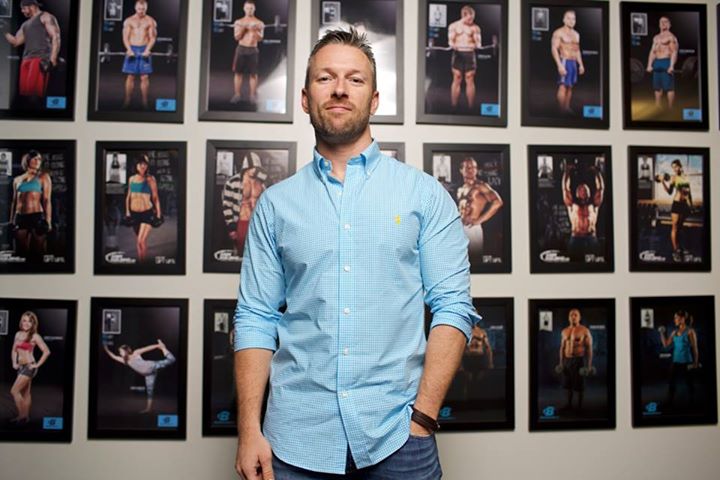

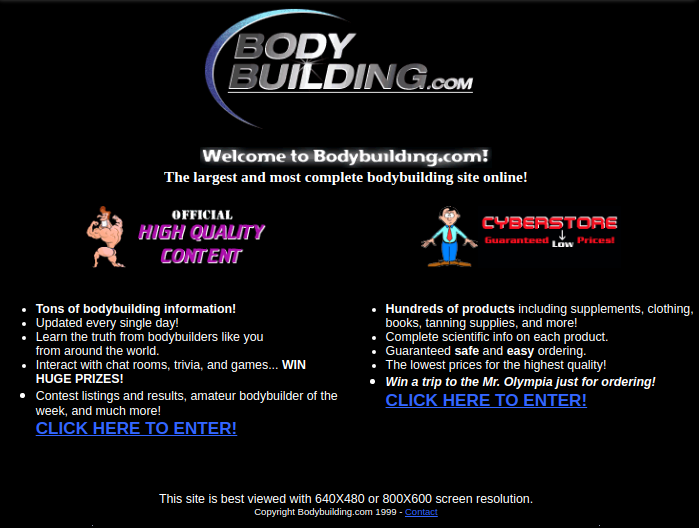

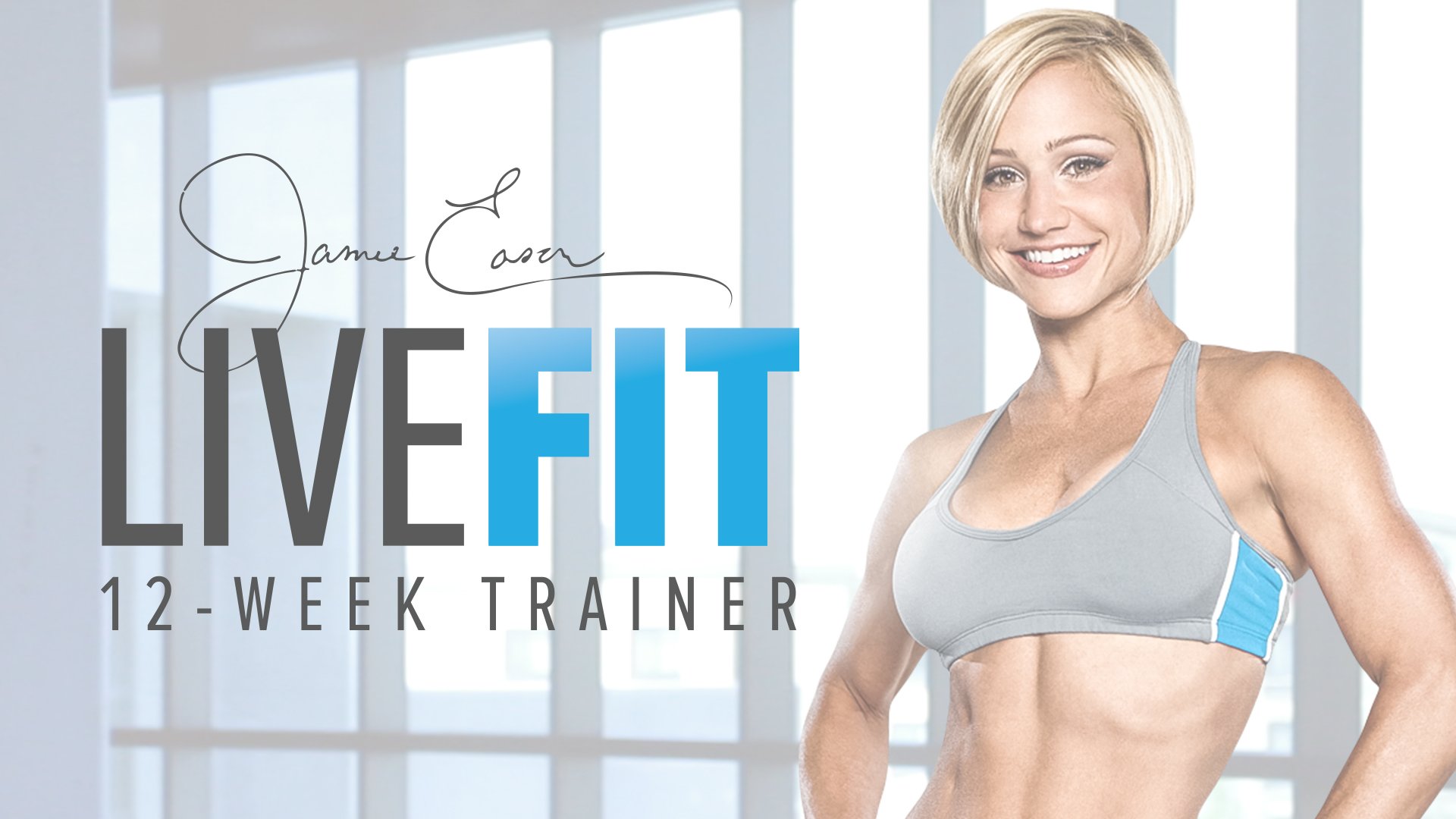
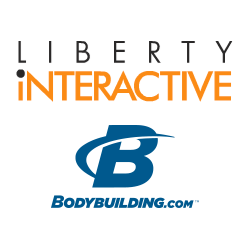
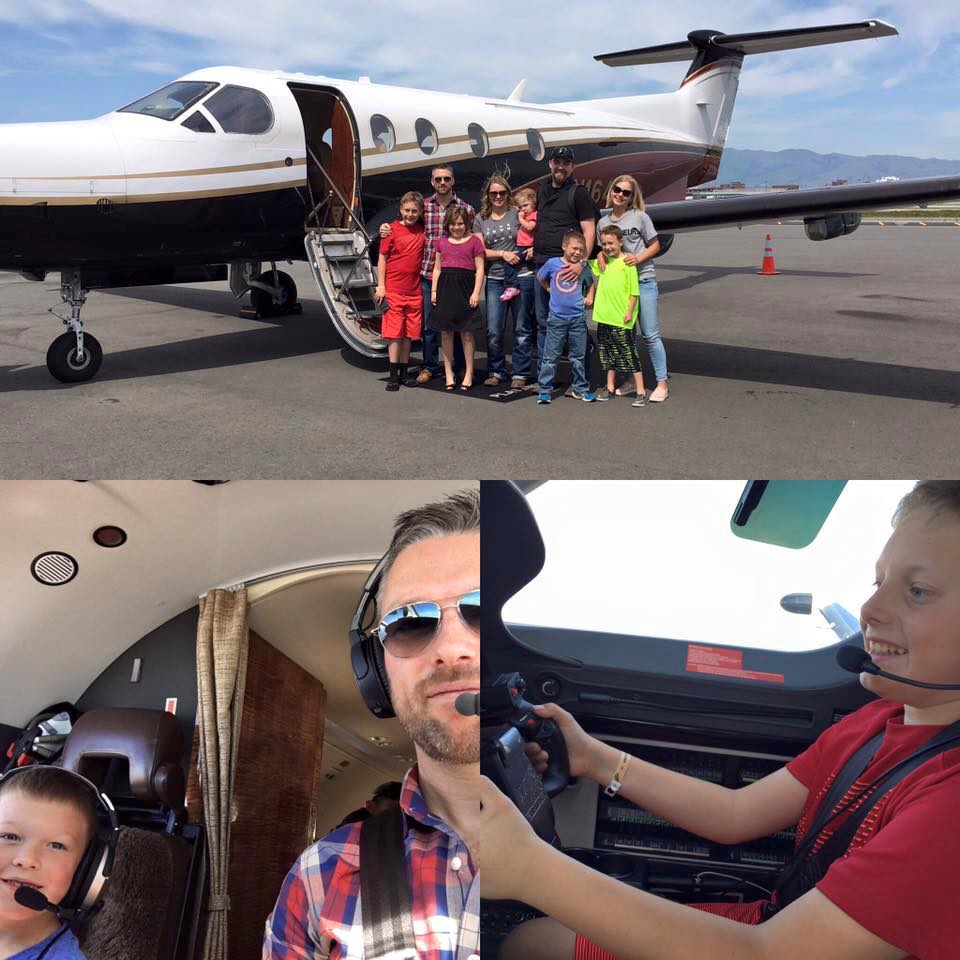
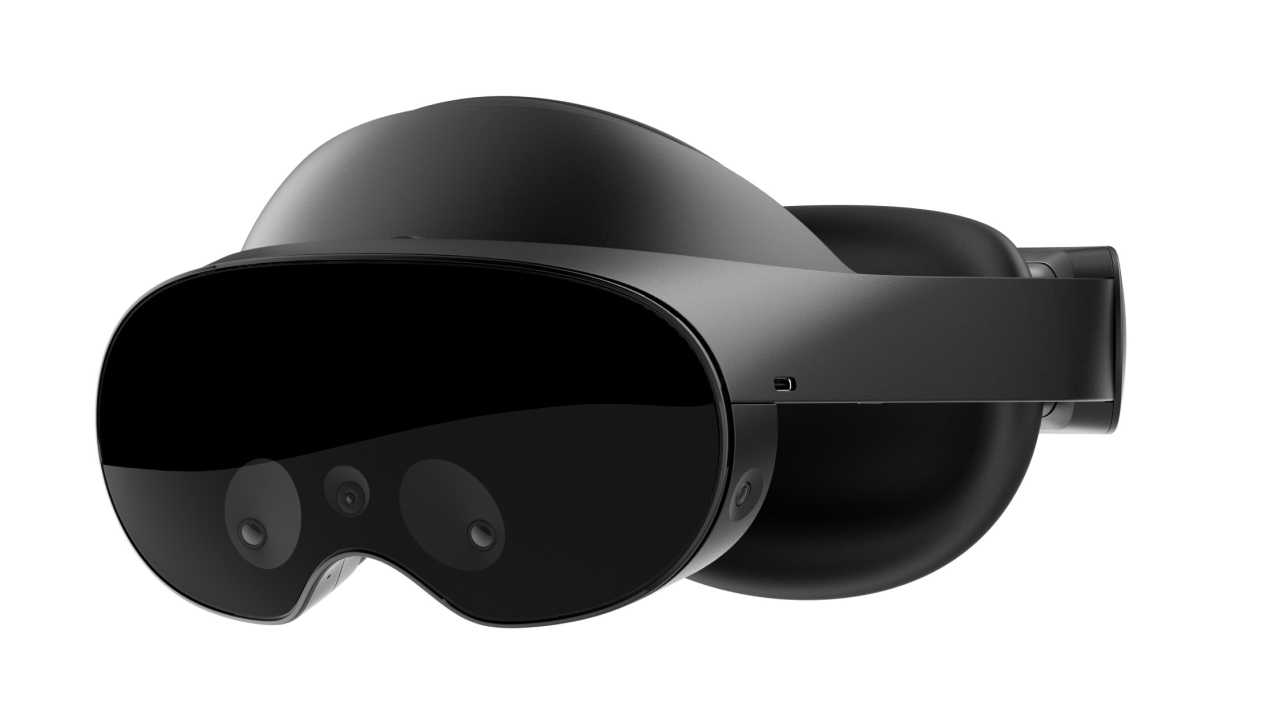
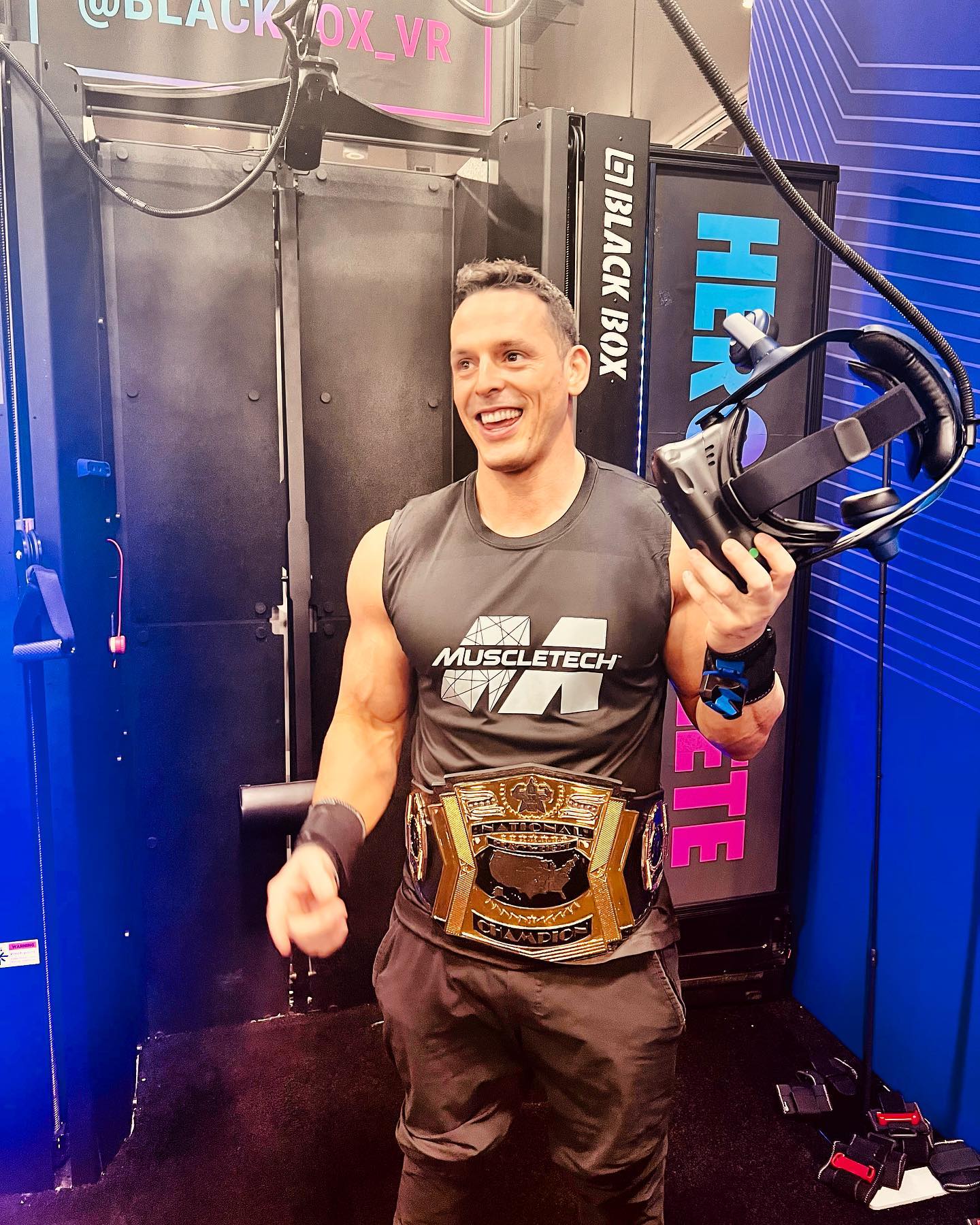
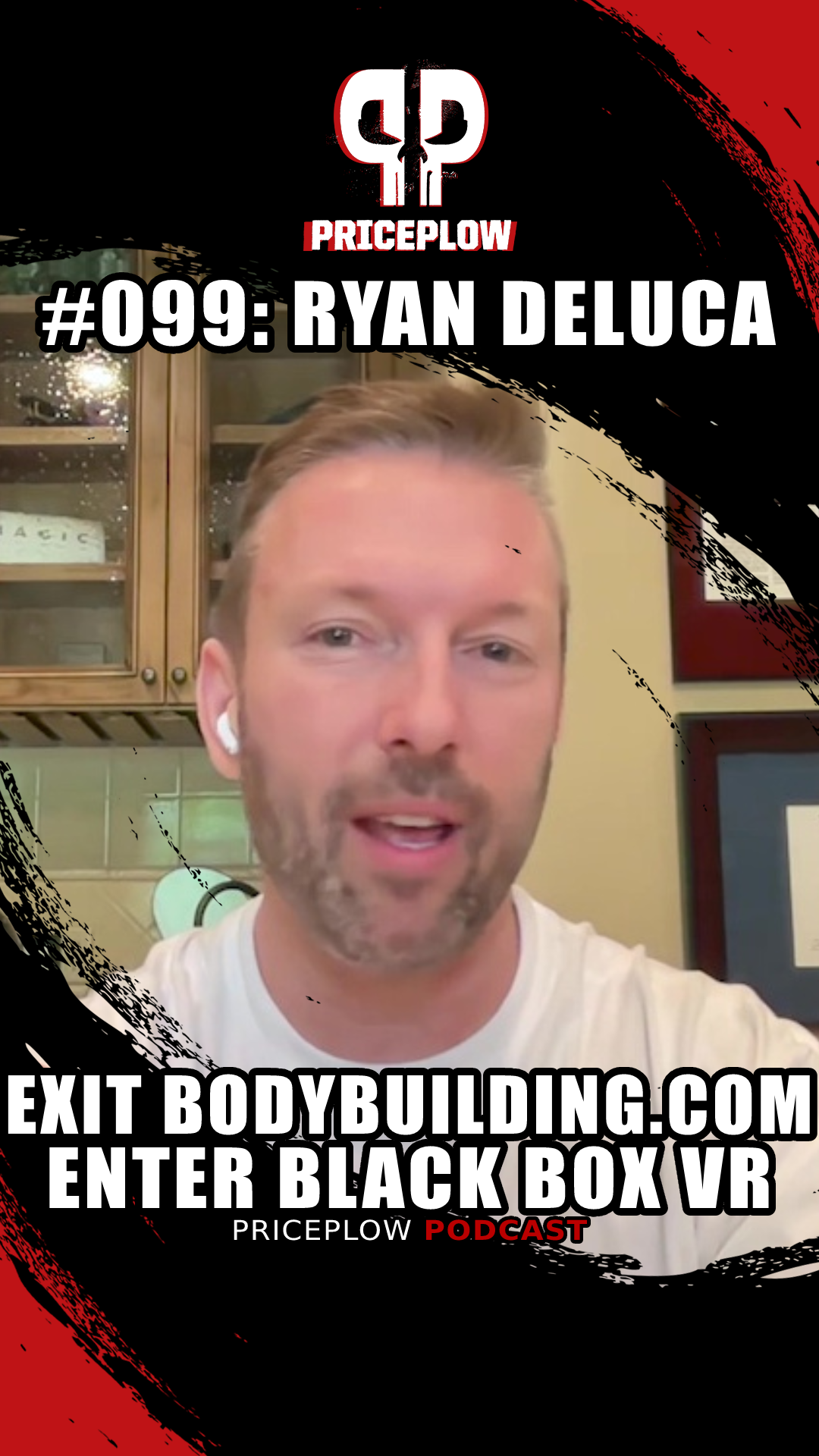


Comments and Discussion (Powered by the PricePlow Forum)